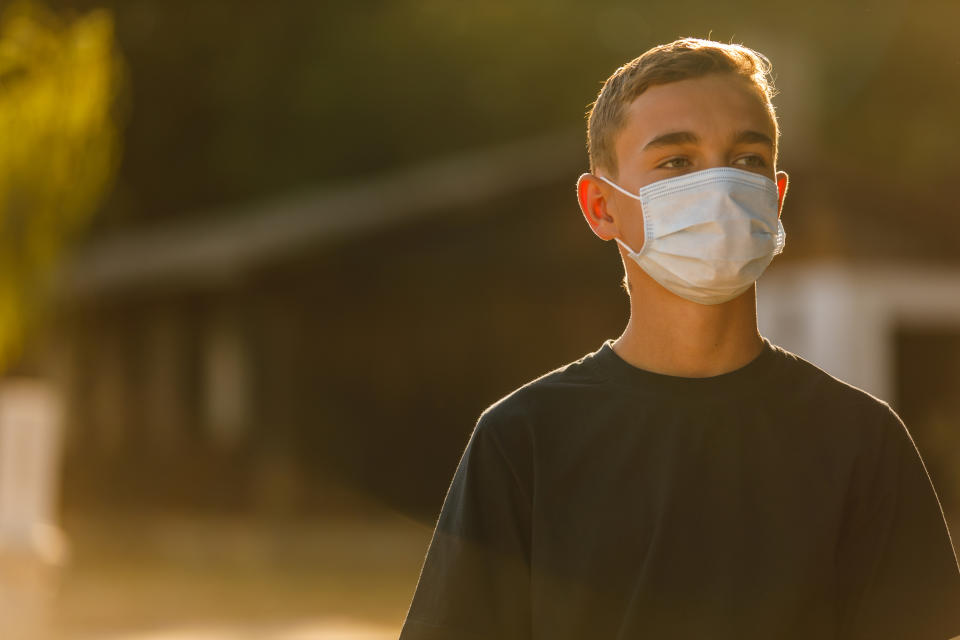The 7 Common Long COVID Symptoms You Should Be Watching Out For

Millions of people are experiencing a post-COVID illness known as long COVID.
The coronavirus pandemic looks a lot different from a few years ago. We have a vaccine, bivalent booster shots, COVID treatments and more of an understanding of the highly contagious virus.
But a more uncharted area is now part of the equation, too: Long COVID, which is a debilitating result of a COVID-19 infection, is affecting many people throughout the world. New research led by the National Institutes of Health found that about 10% of people with an omicron infection go on to develop long COVID.
There isn’t a specific definition for this condition. Instead, long COVID is more of an “umbrella term that describes [the] variety of physical and mental health effects that persist after the original COVID infection,” said Dr. Aaron Friedberg, clinical co-lead of the Post COVID Recovery Program at Ohio State University’s Wexner Medical Center.
The Centers for Disease Control and Prevention defines Long COVID as symptoms that persist four weeks after infection; the World Health Organization says that timeline is 12 weeks. The definition “sort of depends on who you talk to,” Friedberg said, which makes diagnosing, recognizing and treating it challenging. And the fact that long COVID symptoms vary greatly from person to person makes it hard as well.
The symptoms can be present in many different bodily systems, said Sara Gorman, the CEO of Critica, an organization that fights science misinformation. “So, there could be respiratory symptoms, there could be cardiovascular symptoms, gastrointestinal symptoms, cognitive and neurological symptoms as well as mental health symptoms,” she said.
According to some definitions, 200 symptoms can be characterized as part of Long COVID. “I think that’s why it can be so tough for primary care folks who are taking care of patients because it can look so different in different people,” Friedberg added.

Researchers and doctors are working to understand it and treat those who have it. This can be a bit challenging considering the symptoms vary and some are even quite unusual or seemingly unrelated to COVID: The NIH study, for example, found that sexual problems and excess thirst were among some of the symptoms people with Long COVID experience.
That said, there are some more widely understood and common symptoms. Below, doctors break them down and explain what you should know about getting treatment:
Debilitating Fatigue
According to Gorman, the most common symptom is fatigue ― and it’s not a kind of exhaustion that can be remedied with a nap or earlier bedtime.
“It’s sort of a crushing feeling of not being able to move very well, not being able to have any energy to do anything,” Gorman said. “And there can be this post-exertion crash that happens if you push yourself a little bit too much.” This can happen when you push yourself to exercise or when you do something seemingly minor, like spending a morning running errands.
For people dealing with this kind of fatigue, Gorman said, too much exertion one day can lead to days of being unable to do much of anything.
Fast Heart Rate And Chest Discomfort
Friedberg said many people with Long COVID report a fast heart rate and chest pain or discomfort, as well. According to Johns Hopkins Medicine, a fast heart rate could also feel like an irregular heartbeat, or you may notice other physical symptoms, like dizziness, as a result.
Headaches
Another common symptom of Long COVID is headaches, Friedberg said.
Studies show that this isn’t a one-off headache but a persistent headache that continues to occur. This can range in severity, depending on the person.
Brain Fog
Gorman said some people don’t like the term “brain fog,” but this cognitive symptom is another sign of Long COVID. This means having trouble paying attention, being forgetful and not being as cognitively sharp as usual, she said.
“And a lot of people have trouble working because they feel that their cognition is really impaired,” Gorman added.

People suffering from Long COVID may experience shortness of breath, a common symptom.
Shortness Of Breath
According to Friedberg, shortness of breath is another commonly reported symptom. Someone dealing with this issue may find they have trouble walking upstairs and can’t get back into their pre-COVID exercise regimen.
Stomach Issues
“There’s also a small segment [of patients] that have stomach issues, too,” said Dr. William Lago, the medical director of Cleveland Clinic’s Recover Clinic for long COVID patients. “We’ve seen a lot that have the persistent diarrhea that can sometimes go along with a COVID infection.”
The CDC notes that stomach pain is another symptom associated with Long COVID.
Mental Health Symptoms
Mental health disorders, such as depression and anxiety, are common symptoms of long COVID. Multiple studies published over the last three years have found that people who were infected with COVID-19 were more likely to experience mental health issues. Specifically, research published in The British Medical Journal found that folks who had COVID were 35% more likely to develop anxiety and 40% more likely to have depression.
Additionally, a 2020 study published in The Lancet medical journal found that within three months of their illness, 20% of people with a COVID infection also experienced a first-time psychiatric illness diagnosis.

Some people may have only one symptom; others may have several.
“The majority of people that we see who come into our clinic have multiple symptoms, and they tend to be fairly widespread,” Lago said.
In other words, if you have two vastly different symptoms on this list — like diarrhea and chest discomfort — it is still potentially a sign of Long COVID. But you can also just have one of the conditions above and still be dealing with Long COVID.
Long COVID can be different in different populations.
“It actually is interesting, there was a study that came out recently that said there are different forms of Long COVID that are more common in different groups of people,” according to Gorman.
Men are more likely to have cardiovascular symptoms (like chest pain or a fast-beating heart) while women are more likely to have neurological symptoms (such as brain fog), she said. Additionally, women are overall more likely to have Long COVID symptoms, according to an August study published in the Journal of Women’s Health.
What’s more, there are different symptoms among racial and ethnic groups as well, she said.
“A lot of Black people who have Long COVID are not being ... recognized or diagnosed,” Gorman said. But when Black folks are diagnosed, they are presenting with fewer cognitive symptoms than white people, for example.
If you’re worried you have Long COVID, see your primary care doctor.
At this point, there is not a one-and-done treatment for long COVID, but “there are therapeutic agents that are in various stages of clinical trials,” Gorman said. For example, researchers are working to determine if Paxlovid is helpful for Long COVID ailments, while other trials are researching treatments for common symptoms like brain fog and fatigue.
And many patients are finding success by going to doctors who treat the prevalent symptoms, Freidberg said. But it’s important to understand that not all doctors are prepared to treat Long COVID. If you find that your doctor is dismissive or refusing to give you the help you need, you should find someone else for your treatment.
″[You] should be able to get validation and support from [your] health care team,” Freidberg said. “I think having a close relationship with a good primary care physician or provider is really important as a part of that.”
If you think you have Long COVID, you should first visit your primary care doctor, who can help determine if it is Long COVID or another illness.
If you find that your primary care doctor isn’t validating or helping you feel better, check if there is a Long COVID treatment clinic in your area. There are a number of these treatment centers throughout the country, according to Freidberg.
Survivor Corps, a Long COVID advocacy group, has a database of treatment centers that you can use to find a doctor near you.

Though there are unknowns, there is a lot of research being done.
Gorman said it’s easy to feel doom and gloom about Long COVID, but there are some decidedly good things happening in the research field. Plus, “there’s good evidence that people are recovering,” Gorman said.
“The general overall rates of Long COVID have gone down recently in part because some people reported that their symptoms have resolved,” she added. Many people fear that they’ll have Long COVID forever, but that is not necessarily the case.
That said, it’s important to be cautious, too. Anyone can develop Long COVID, even after their second or third COVID infection. You don’t know how your body will react to the chronic condition.
Freidberg said that some of his patients have been dealing with Long COVID for years, which is frustrating and isolating. If you do have Long COVID, Freidberg stressed that you are not alone; there are “millions of people around the world who are dealing with these same symptoms.”
Know that people are working to resolve it. The National Institutes of Health received $1 billion to put toward Long COVID research, and medical professionals and researchers are working to understand the condition as well.
“I do think there is a real action-oriented pathway in the medical and scientific community around Long COVID, and there is really a good will to do something about it,” Gorman said.
This story originally appeared on HuffPost.Experts are still learning about COVID-19. The information in this story is what was known or available as of publication, but guidance can change as scientists discover more about the virus. Please check the Centers for Disease Control and Prevention for the most updated recommendations.

 Yahoo Lifestyle
Yahoo Lifestyle 
